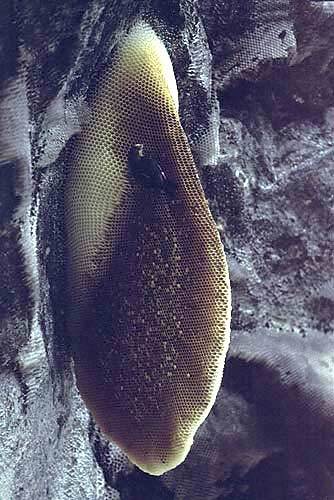Honeyguides: Adaptive Value
There are many hives that are inaccessible to honeyguides - in one study, 96% of them - because of being located in large trees, crevices, or termite mounds. By leading humans (or possibly other animals) to these hives, the honeyguide can consume whatever is left beh
 ind.
Humans use smoke to calm the bees, which also decreases the
honeyguide's risk of being stung. The humans themselves benefit greatly
from following the birds - in unfamiliar areas, honey-hunting human
groups take on average 3.2 hours to find a nest when a bird is guiding
them, compared to 8.9 hours on their own. This estimate is conservative
because it does not include the amount of time a human would spend
searching only to never find a nest. (May, 1989).
ind.
Humans use smoke to calm the bees, which also decreases the
honeyguide's risk of being stung. The humans themselves benefit greatly
from following the birds - in unfamiliar areas, honey-hunting human
groups take on average 3.2 hours to find a nest when a bird is guiding
them, compared to 8.9 hours on their own. This estimate is conservative
because it does not include the amount of time a human would spend
searching only to never find a nest. (May, 1989). However, honeyguides don't require the help of other animals to survive, as is proven by the other species of honeyguides that do not exhibit this guiding behavior. Similar amounts of wax were found in the stomachs of both the guiding honeyguides and those who don't guide, showing that it doesn't necessarily benefit them any more than the other birds as far as wax-gathering goes.
(Image: Nashville Zoo)